LEGUMES
Alysicarpus vaginalis (Alyce, Buffalo or one-leaf clover)
An erect or spreading perennial or annual herb (see Figure 76) with ovate leaves up to 2.5 cm long and reddish-yellow or pale purple flowers (Bogdan, 1977; Skerman, 1977). Probably the best known cultivated species grown in India and Sri Lanka (Bogdan, 1977) is also found in South America, South-east Asia (Humphreys, 1981), the Pacific Islands (Fiji, Tahiti, etc.), eastern Africa and Florida (Whyte et al., 1953). In many countries it is unsuitable for cultivation but has naturalized and is presently found in many local pastures. It is a self-seeder with non-specific rhizobium requirements, is well liked by stock, does not tolerate wet soils and is susceptible to root nematodes. It is commonly found on coral sand in Tanzania (UNESCO, 1979) and Tahiti, and on clay loams on basaltic slopes in Fiji (Payne, 1955), but is not very productive, although Partridge (1979) suggested that together with other low growing legumes A. vaginalis can make significant contributions to animal weight gains. Moog et al., (1977) have identified it as one of the main native leguminous species under coconuts in the Philippines, where “highly nutritious feed like ‘sapinet’ (A. indica) and ‘mani-manian’ (A. vaginalis)” are important supplements to rice straws after rice harvest. In Thailand Satjipanon (1991) noted that A. vaginalis is tolerant of drought, is relished by cattle and combines well with B. ruziziensis. In Sri Lanka it was grown with B. brizantha, the mixture yielding about 12.5 t DM ha-1 when fertilized with N and P (Fernando, 1961). Other Alysicarpus species include A. glumaceus and A. rugosus. Although not recommended for planting, Alysicarpus species are an important legume component of many native pastures under coconuts.
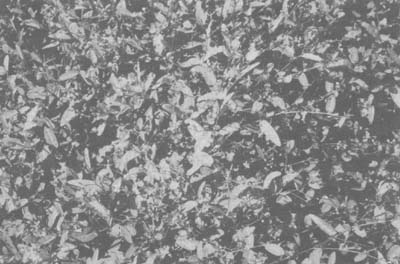
Figure 76. - Alysicarpus vaginalis (photo D. MacFarlane).
Arachis pintoi cv. Amarillo (Pinto or Amarillo peanut)
A prostrate stoloniferous perennial rooting at the nodes, with yellow flowers (see Figure 77) and pinnate leaves with pairs of leaflets. Seed is produced in a pod which develops a long tube that bends down and buries seed in the top 5 cm of soil (Evans and MacFarlane, 1990). It is shade tolerant, readily eaten by stock, withstands heavy grazing, is adapted to wet/flooded soils that are acid to neutral and has a high CP content (19 percent) and high digestibility (72–74 percent).
However, Carulla et al. (1991) suggest that grazing animals may need a period of time to learn to consume A. pintoi but it was well consumed by previously adapted animals in an A. pintoi/B. dictyoneura grazing trial in Colombia. It requires a specific rhizobium for inoculation (CIAT 3101 or QA1091) and Evans et al. (1992) note that it has been slow to establish an effective rhizobial association in all situations. Pretreatment of seed to overcome hardseededness includes heating in pods at 40°C for 14 days for at 20/35°C for 21 days. The high seed cost ha-1 is a major deterrent to its use for grazing, but it establishes more readily from cuttings than hetero and creeping vigna (Vigna parkeri). Asakawa and Ramirez (1989) describe an implement designed at CIAT for planting stolons.
Originating in Brazil A. pintoi has been evaluated in Australia and Colombia (Carulla et al., 1991; Cook et al., 1990) with annual DM yields of 5.2 to 9.6 t ha-1 for A. pintoi growing with Brachiaria sp. producing 10.8 to 20.1 t ha-1 in the tropics, and heifer liveweight gains of 515 g head-1 day-1 over a 594 day period on A. pintoi - Brachiaria sp. pastures at 2.4 beasts ha-1 (Grof, 1985). A. pintoi has been grown in association with Axonopus affinis, Brachiaria brizantha, Brachiaria decumbens, Brachiaria dictyoneura, Chloris gayana, Digitaria didactyla, Paspalum dilatatum and Paspalum notatum. Cameron et al. (1989a) recorded it as a very persistent legume under heavy grazing, and Ibrahim et al. (1993) noted that it persisted well in combination with B. brizantha at a high stocking rate (whereas Centrosema macrocarpum and Stylosanthes guianensis declined) in Costa Rica. The success of A. pintoi was probably based on its prostrate growth habit, dense stolons and its capacity to flower year round. Jones (1993) also stressed its ability to set seed under grazing and to root from stolons.

Figure 77. - Arachis pintoi cv. Amarillo.
Lascano and Thomas (1988) noted in a grazing trial in Colombia, where steers grazed pastures consisting of A. pintoi and four Brachiaria sp., that A. pintoi had a crude protein level of 17% and in vitro dry matter digestibility (IVDMD) of 62% which, however, varied with the season. Associated grasses had leaf crude protein levels of 7.8% (dry season) and 9.8% (wet season). The legume content of the pasture on offer was high and varied from 28% in the dry season to 58% in the wet season. Corresponding values in the diet selected were 37% and 60% indicating that animals selected legume in a slightly higher proportion than was present in the forage on offer. It is clear that A. pintoi is a high quality legume well accepted by grazing cattle. Queensberry et al. (1993) recently reported that following evaluation of 110 introductions two new lines of Arachis are now under study which appear to be equal or superior to released cultivars in total yield and to be resistant to root-knot nematode (Meloidogyne arenaria). Kretschmer et al. (1993) reported on the evaluation of fourteen accessions under grazing in ranchers' fields.
This legume may have considerable potential under coconuts but insufficient information is yet available to make recommendations. Evans et al. (1992) note that it has been sown in a legume mix into established Signal grass, but there is no local information in Vanuatu about grazing performance. It has also been sown with greenleaf desmodium as a shade tolerant cover crop with young hybrid coconuts at the IRHO station. It was identified in recent cutting trials in Australia (Stur, 1991), in Bali (Rika et al., 1991) and North Sulawesi (Kaligis and Sumolang, 1991) in Indonesia and Malaysia (Ng, 1991) as one of a number of legumes showing good regrowth and persistence under shade, and grazing trials are presently underway (Shelton, personal communication).
In trials at Manado, North Sulawesi, Kaligis and Mamoto (1991) noted that A. pintoi had both a high digestibility and high voluntary intake.
Schultze-Kraft (1986) suggested that low dry season productivity could be a major limitation (although plants survive more than three months of drought) and Jones (1993) indicated that persistence may occasionally be restricted (in Queensland) by soil type. However, according to Minson et al. (1993) in reviewing tropical pastures for dairying in northern Australia “twinning tropical pasture legumes are unstable under commercial stocking rates and effort is now directed to species which may withstand heavy grazing, such as Pinto peanut (Arachis pintoi cv. Amarillo)”.
Calopogonium mucunoides (Calopo)
A trailing and climbing legume, densely covered with brown hairs on the leaves and stems (Bogdan, 1977; Whiteman, 1980), similar to Puero (P. phaseoloides) but with smaller leaves and more hairs (see Figure 78). The flowers are small and blue and pods short (2–4 cm), flat and also very hairy (Steel et al., 1980). Seed propagated (although Whyte et al., 1953 indicated that in Malaysia propagation is by cuttings), is a short lived perennial which may die out under dry conditions and regenerate as an annual in the wet season from fallen seed (Skerman, 1977). Native to tropical South and Central America, Calopo was introduced early in this century to tropical Africa and Asia, first as a cover crop for tree plantations (Anon., 1968a) and as a green manure, and later in trials as a forage plant (Anon., 1970; Bogdan, 1977). In many areas it has become naturalized and being shade tolerant (although Bogdan (1977) and Schofield (1941) suggest that it is shade intolerant) is often a component of indigenous swards under coconuts such as in the Solomon Islands (Watson and Whiteman, 1981a).
Best adapted to the humid tropics where rainfall exceeds 1,250 mm, this vigorous species can form a tangled mass of foliage 30–45 cm deep and is often used as a pioneer to smoother woody weeds in newly cleared land. It is a particularly useful cover crop under coconuts because of its tendency to die back in dry periods and not compete with the coconut palm for moisture and nutrients (McPaul, 1964; Salgado, 1937). It also combines well with tall grasses like P. maximum and P. purpureum, and with B. brizantha and B. decumbens. Hill (1961) found that in Papua New Guinea some 2300 cross-bred Brahman cattle were successfully grazed at 2.5 beasts per hectare under coconuts on a P. conjugatum and C. mucunoides pasture. The widespread use of Calopo, Centro and Puero in Philippines was reported by Barker and Nyberg (1968) and UNESCO (1979). Reynolds (1983) reported Puero-Calopo, tall Guinea and Cori grass mixtures fixing > 130 kg ha-1 yr-1 of N, but Oke (1967) found that the amount of N fixed by Calopo was much smaller than that fixed by Puero.

Figure 78. - Calopo (Calopogonium mucunoides).
However, although it is sometimes used as a pioneer legume sown in a mixture with Centro and Puero to give early cover, its apparent low palatability (usually ascribed to the abundance of hairs on the leaves and stems), short life and intolerance of dry conditions means that in recent years it has had a less important role as a forage legume where cattle are run under coconuts. However, the evidence on its palatability is conflicting because Watson and Whiteman (1981a) found that the species was eaten readily in a grazing trial under coconuts and persisted well under moderate grazing pressure where light transmission was 60 percent.
Recently, it was concluded that the taste or odour of the plant appears to limit its intake (McSweeney and Wesley-Smith, 1986) and the hairy leaf theory was discounted. According to McSweeney and Wesley-Smith (1986) it is harvested and fed to livestock in the wet tropics of Australia. Hogan et al. (1984) noted that cattle were reluctant to eat freshly cut Calopo, however, treatment of Calopo hay with various additives such as molasses was reported to have increased the intake by sheep to a level comparable with that of other tropical forages (McSweeney and Wesley-Smith, 1986).
A promising Calopogonium species in the rubber industry in Malaysia is Calopogonium caeruleum which can be vegetatively propagated (Chee, 1985). However, when grown as a legume cover crop it is not palatable for grazing animals; but associated with Pueraria phaseoloides, as a cover crop, sheep will graze the Pueraria phaseoloides but not the Calopogonium caeruleum (Chee Yan Kuau, personal communication). Wong (1982) noted that C. caeruleum combined well with Digitaria setivalva and Common or Coloniao guinea and considered it a promising legume apart from its low palatability to cattle. Pillai et al. (1985) and Tajuddin et al. (1993) noted that when grazed by sheep, the proportion of C. caeruleum increased (while that of P. phaseoloides and C. pubescens decreased). Grown with common guinea grass in Queensland it was evaluated under continuous grazing at approximately 2.5 animals ha-1 over three years. As the C. caeruleum was rarely eaten, by the third year the guinea grass was selectively grazed out and C. caeruleum dominated the pasture. The average daily liveweight gain declined from about 0.5 kg beast-1 in the first two years to less than 0.2 kg beast-1 in the third year (Middleton and Mellor, 1982).
In a feeding trial with sheep and goats, Ginting et al. (1987) found that the digestibility of both P. phaseoloides and C. caeruleum was high, but the intake of C. caeruleum was low. In a study carried out in Malaysia to evaluate responses of Puero, Centro, Stylo, Calopogonium caeruleum and Desmodium ovalifolium to increasing levels of shade it was noted that most species declined in N-fixing ability with increasing shade except for C. caeruleum (Sundram et al., 1986).
Centrosema pubescens (Centro)
This is one of the most widely distributed of the tropical legumes native to Central and South America (Teitzel and Burt, 1976). Introduced first as a cover crop in tree plantations, it is now widely grown throughout the tropics and sub-tropics, and has become one the most popular of tropical fodder legumes, highly valued for its vigorous and productive growth, good quality herbage and ability to form balanced mixtures with grasses (Bogdan, 1977).
It is a vigorous trailing, twining and climbing perennial herb with trifoliate slightly hairy leaves, smooth fine stems, distinctive white, mauve or purple flowers (see Figure 79) and linear pods 7.5–15 cm long with red-brown seeds streaked with black. Centro is well adapted to wet tropical conditions with rainfall in excess of 1750 mm, but grows also in areas receiving as little as 750–1,000 mm. Where rainfall exceeds 2500 mm it may be attacked by Cercospora leaf spot. Being deep rooted it is fairly drought tolerant. It tolerates a wide range of soils (Skerman, 1977) but does not grow well on coral soils (Steel et al., 1980). As it is slow to establish, land preparation should be thorough to produce a vigorous stand. It has been suggested that seedling growth is slow under shady conditions, but that mature plants are shade tolerant (Skerman, 1977). Percentage yields of 100, 82, 62 and 44 were recorded at full sunlight, 70, 45 and 27 percent respectively thus making Centro more shade tolerant than Siratro but less than D. intortum (Eriksen and Whitney, 1982). Often grown with pioneer legumes such as Calopo or Puero, once established it combines well with both tufted (e.g. Guinea grass; Humphreys, 1974) and creeping grasses. Centro is moderately palatable and can withstand fairly heavy grazing once it is established. According to Evans and MacFarlane (1990) once it is well established it will tolerate higher stocking rates than glycine. Under good seedbed conditions 3 kg ha-1 of scarified seed with 50 percent germination should produce 4–5 plants per square metre. Propagated from seed which should be inoculated with a specific rhizobium before sowing and treated for hard seededness, Common centro is the main variety used in most coconut areas although cv. Belalto is likely to become more widespread.
Of all the tropical legumes, Centro is grown practically in every coconut area with a range of grasses (see sections 3.4 and 3.5). It has a specific rhizobial requirement (CB 1923) and its N fixing ability has been measured at between 50– 260 kg N ha-1 in various areas although Reynolds (1983) recorded values of only 67 and 87 kg N ha-1 with Guinea and Cori grasses in Western Samoa. Good liveweight gains between 385–732 kg ha-1 year-1, depending on stocking rate, have been recorded in Bali, Indonesia in combination with mainly B. decumbens (Nitis and Rika, 1978). In Western Samoa with fertilized Guinea, gains of 189 and 306 kg ha-1 year-1 were achieved with lower stocking rates (Reynolds, 1981). If managed properly Centro persists well. In Thailand it was reported to grow well in forest plantations (Thongmee, 1992).
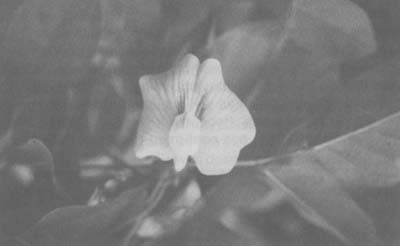
Figure 79. - The distinctive flower of Centrosema (C. pubescens.
Desmodium heterophyllum (Hetero)
A perennial prostrate creeper (see Figure 80) which can form swards up to 15–20 cm high, roots strongly at the nodes of creeping stems, has trifoliate leaves, small reddish-pink flowers and small pods 12–25 mm long (Bogdan, 1977; Skerman, 1977). Native to South-East Asia and the islands of the Indian Ocean, hetero is now found throughout the Pacific Islands in native pastures and has been introduced into Australia where it has formed stable mixtures with D. decumbens and B. decumbens (Bogdan, 1977; Whiteman, 1980). Performs well over a range of soil and moisture conditions growing under 1500 mm of rainfall in Australia and at 4,000 mm in Fiji (Roberts, 1970b). It grows poorly on coralline soils, is drought tolerant and can withstand both short term flooding (Skerman, 1977) and waterlogging (Gutteridge and Whiteman, 1978). Although small quantities of seed are available (cv. Johnstone), harvesting is difficult, and hetero is usually propagated by vegetative runners which are best planted with the companion grass when the soil is moist and overcast conditions are likely to persist for a few days. Seed is dispersed by grazing animals. Evans et al. (1992) recommend that it should be planted in any plantation where Signal, Koronivia or buffalo grass is established and MacFarlane et al. (1994) noted that it was a very effective cover crop under coconuts serving as a weed barrier and allowing easy collection of coconuts. It is particularly shade tolerant, mixes well with both low growing stoloniferous and taller grasses, and is one of the most tolerant legumes to heavy grazing (Cameron, 1987; Harding and Cameron, 1972; Steel et al., 1980). However, hetero production will fall if the pasture is undergrazed because of shading from taller grasses (Evans et al., 1992) and heavy grazing to 15–20 cm sward height allows sufficient light penetration for vigorous legume growth.
In Fiji (Partridge, 1979) and Western Samoa (Cook, 1987; Evans, 1992; Reynolds, 1982c) it combines well under coconuts with B. brizantha (see Figure 81), B. decumbens, B. humidicola, I. aristatum and P. maximum. Hetero is very specific in its rhizobium requirements, the seed requiring inoculation with either strain QA-982 or CB 2085 (Cameron, 1987; Skerman, 1977). Nitrogen fixation of 60 kg ha-1 year-1 N was recorded with D. decumbens in northern Queensland and 64 kg N and 110 kg N with tall Guinea and B. miliiformis in Western Samoa (Reynolds, 1982c). In Australia cattle grazing on D. decumbens or B. decumbens mixtures with D. heterophyllum gained over 750 kg liveweight ha-1 year-1 (Mackay, 1973). Cameron (1987) reported stocking rates of 4 to 5 beasts ha-1 on pangola/hetero pastures at South Johnstone, Queensland and in one of the early grazing trials which led to the release of hetero, pangola plus 250 kg ha-1 nitrogen stocked at 5 beasts ha-1 gave a liveweight gain of 887 kg ha-1 year-1 or 0.503 kg head-1 day-1 compared with pangola/hetero stocked at 4 beasts ha-1 which gave 795 kg ha-1 yr-1 or 0.54 kg head-1 day-1 liveweight gain. Its presence in existing and improved pastures has been reported in many coconut areas and it undoubtedly makes a very useful contribution to animal liveweight gains (Partridge, 1979). Where already present it should be encouraged as well as introducing it into grass nurseries to encourage its spread to new areas. Recent work by Stur (1991), Rika et al. (1991) and Kaligis and Sumolang (1991) has confirmed the shade tolerance of hetero.
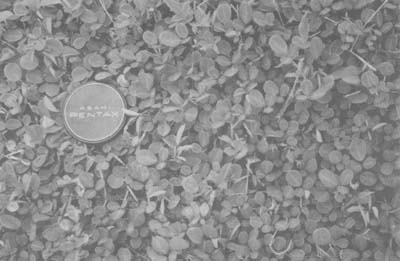
Figure 80. - Hetero (D. heterophyllum).

Figure 81. - A mixture of Palisade grass (B. brizantha) and Hetero (D. heterophyllum),
Other Desmodium species which may have a role to play in pastures under coconuts include:
Desmodium adscendens - a rambling perennial herb found throughout tropical Africa and in South America (Bogdan, 1977). It was established under coconuts (see Figure 82) in Zanzibar, Tanzania for further observation (Reynolds, 1983).
Desmodium canum (Kaimi clover) - Perennial herb of varying habit, from ascending to erect, sometimes a sub-shrub up to 0.3–3 m high (Bogdan, 1977). Leaves on upright stems are lance shaped and often have a white mark along the midrib; those on trailing stems have less markings and are oval or round (Evans and MacFarlane, 1990). Widespread in the wet tropics, common in Fiji, Hawaii, North and Central America and tropical Africa, it has been extensively evaluated in Hawaii (Whitney and Green, 1969) and in Northern Queensland. It requires a specific inoculum (CB 627). In Vanuatu it was described by MacFarlane and Shelton (1986) as “a native, low growing legume which occurs most commonly in carpet and buffalo pastures”. MacFarlane et al. (1991) suggest that it has poor seedling vigour, low yields and some unpalatability. Unlike hetero D. canum grows well on coastal soils in Vanuatu and although not recommended for planting is a useful local legume. In Tonga it is widespread in native pastures under coconuts (see Figure 83) and Wahananiu et al. (1993) mention it as one of the indigenous legumes under coconuts in the Russell Islands (Solomons). It grows best where rainfall is from 1,500 mm to more than 3,075 mm (Skerman, 1977); is compatible with a number of sward-forming grasses (such as buffalo and carpet), tolerates heavy grazing and is quite shade tolerant. Grof (1986) indicated that it is found in moist and shaded situations in the eastern plains of Colombia and persisted well with B. brizantha and B. humidicola. It performed well under 70 percent full sunlight in Hawaii (Eriksen and Whitney, 1982) and was ranked ahead of Siratro and Stylo in terms of shade tolerance (Ludlow, 1980). However, its palatability is affected by a high tannin content (Skerman, 1977); there is little information about its use under coconuts and in Western Samoa and Zanzibar the author found that its growth was poor. It may have a role to play under coconuts between latitudes 15–20° N and S.

Figure 82. - The legume Desmodium adscendens.
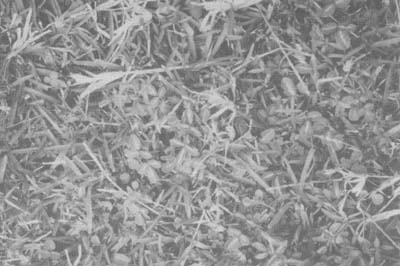
Figure 83. - Desmodium canum.
Desmodium intortum (Greenleaf desmodium) - A large trailing and climbing perennial which roots at the nodes, has a deep taproot, grows naturally in Central and South America and has spread throughout the tropics (see Figure 84). Leaflets are dark green with a brown or purple flecking on the upper surfaces; flowers are deep lilac or pink (Evans and MacFarlane, 1990). It grows in areas with rainfall from 875– 3475 mm, is susceptible to extended dry spells and is commonly found above 1500 m in the tropics and down to sea level in the sub-tropics (Bogdan, 1977; Whiteman, 1980). It combines well with a number of grasses such as B. brizantha and B. decumbens, is fairly shade tolerant but has a relatively low digestibility and is easily grazed out. The relative DM production at 100, 70, 45 and 27 percent full sun was given as 100, 89, 76 and 46 percent by Eriksen and Whitney (1982) and by Compère (1961) as 100, 93, 68 and 44 percent. According to Whiteman et al. (1974) it performed well under 50 percent sunlight and Wong (1991) rated it as one of the most productive species for moderately shaded environments. Although ranked by Ludlow (1980) as very shade tolerant (ahead of Centro, Stylo, etc.) it was suggested by Skerman (1977) that D. uncinatum is more tolerant of low light intensity. However, Stur (1991) rated it as one of the best yielding legumes under 50 and 20% light transmission. It has an excellent adaptation to poorly drained or waterlogged soils and can tolerate acid conditions. It requires fertility levels similar to glycine, especially for phosphorous. Evans and MacFarlane (1990) suggest that it has considerable potential for weed control in tree crop inter-rows. It has a specific rhizobial requirement (CB 627). Like D. canum it may have a role to play under coconuts between latitudes 15–20° N and S and MacFarlane et al. (1994) confirmed that it was well adapted in Santo under coconuts.
Desmodium ovalifolium (Synonym D. heterocarpon) - A perennial shrub growing 1 to 2 m (Bogdan, 1977; Skerman, 1977), although the cultivar (CIAT 350) used by Grof (1982) in some experiments was described as a perennial sub-shrub rarely exceeding 75 cm in height. Widely distributed in South East Asia and the Pacific, it is best adapted to regions with 2,000 mm or more rainfall and short dry seasons. In Malaysian rubber plantations it was recommended as an alternative to the normal legume cover of Puero, Calopo and Centro (Watson, 1963) while in Sri Lanka it is considered to be particularly useful under rubber because it grows well even in dense shade and does not compete with young rubber trees (Grof, 1982; Skerman, 1977). Although it has a rather high content of tannin, which affects digestibility and intake (Rotar, 1965), it was noted by Grof (1982) that there were seasonal variations in palatability. With D. heterophyllum it is compatible with aggressive mat-forming B. decumbens under grazing conditions, which suggests that wider testing of D. ovalifolium, in association with stoloniferous grass species, under coconuts is needed.

Figure 84. - Greenleaf desmodium (Desmodium intortum).
D. ovalifolium is described as the most shade tolerant of five leguminous cover crops in mature rubber plantations in Sri Lanka (Jayasinghe, 1991) and Chen and Othman (1984) noted that it was the most shade tolerant of a number of legumes tested in Malaysia. Satjipanon (1991) indicated that this shade tolerant legume, which spreads by both stolon and seed, is widely distributed under rubber trees in the south of Thailand where it is well adapted to a wide range of soils and to grazing. According to Thongmee (1992) with guinea grass it was recommended for forest plantations in north Thailand. Bishop (1983) described its use under fuelwood trees (Inga edulis) in Amazonian Ecuador for sheep grazing.
Evans and MacFarlane (1990) and Evans et al. (1992) describe its use in Vanuatu (see Figure 85) where it combines well with sward forming grasses such as Koronivia and withstands heavy grazing. It produces well in shaded situations (and is even described as the most shade tolerant legume available) where rainfall is greater than 2,000 mm year-1 and while slow to establish from seed (sown at 2 kg ha-1) forms a dense cover under coconuts after six months. MacFarlane et al. (1993) suggest that slow emergence is probably due to the fact that is particularly hard-seeded. It is moderately palatable and has considerable potential as a dense, shade tolerant cover for weed control and for nitrogen fixation in tree crop plantations.
Two fungal diseases have been reported in Sri Lanka (wart disease caused by Synchytrium desmodii) and Malaysia (pink disease caused by Phanerochaeta salmonicolor). Lenné and Stanton (1990) suggest that care should be taken with D. ovalifolium seed from S.E. Asia as wart disease has considerable potential to reduce legume persistence. Insufficient evidence is available to assess the likely effect of pink disease on legume productivity and persistence.
Desmodium triflorum (tropical clover or small leaf desmodium) - A prostrate creeping perennial or annual herb often rooting from nodes and forming dense mats, has trifoliate leaves with small obovate leaflets 4–12 mm long and blue, pink or purple flowers. Found throughout the tropics in native pastures it does not produce much bulk but is drought resistant (although MacFarlane et al., 1991 suggest that it does not tolerate extended dry periods), palatable to stock and very resistant to grazing (Bogdan, 1977; Skerman, 1977). Already naturalized in many coconut growing areas this legume should be encouraged to spread, although D. heterophyllum may make a more significant contribution to forage production and liveweight gains. Berges et al. (1993) indicate that D. triflorum is found in native pastures under coconuts in Vanuatu.
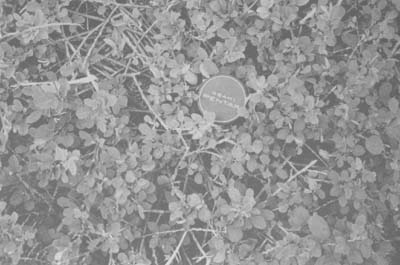
Figure 85. - Desmodium heterocarpon (ovalifolium).
Desmodium uncinatum (Silverleaf desmodium) - a large rambling perennial with distinctive foliage (see Figure 86), indigenous to northern Argentina, Brazil and Venezuela is now widespread throughout the tropics. It is suited to a similar climatic range to greenleaf desmodium, but is less drought resistant, and is less able to withstand waterlogging and poor drainage. It requires a specific inoculant (CB 627). It has been established successfully under native conifers in Australia (Richards and Bevege, 1967). It combines well with a number of grasses, is persistent, vigorous, grazed by cattle (once they are used to it), and is more shade tolerant than D. intortum and M. atropurpureum (Skerman, 1977). Like D. canum and D. intortum it may have a role to play in pastures under coconuts between latitudes 15–20° N and S.

Figure 86. - Silverleaf desmodium (D. uncinatum).
Gliricidia sepium (G. maculata) (Gliricidia)
One of the browse tree legumes, G. sepium is a small to medium-sized deep rooted perennial growing from about 5 to 15 m tall. It is thornless with smooth whitish-grey bark; leaves are pinnate, up to 30 cm long ending in a terminal leaflet. Flowers form conspicuous densely flowered inflorescences, generally bright pink tinged white with a yellow spot at the base of the standard petal. Flattened pods some 10–15 cm long change in colour from green to yellowish brown when mature, each containing four to ten seeds yellowish-brown to dark reddish-brown in colour (NFTA, 1989). In humid climates with no distinct dry season gliricidia may retain its leaves throughout the year but generally it is deciduous, losing some or all of its leaves during the dry season. Nitis (1989, 1991) and Nitis et al. (1991) suggest that farmers overcome this drawback by lopping the shrub three-four months before the onset of the dry season. New shoots will then grow and produce young and succulent green feed during the dry season. This practice has been used successfully in Vanuatu to provide dry season feed (Charles Rogers, Montmartre Plantation). Gliricidia was planted on a 4 × 2 m grid using 2 m stakes as planting material. Leafy top growth of Gliricidia was lopped on a daily basis to provide a high protein supplement to ewes and lambs (Evans et al., 1993). See Figure 87.
Although G. sepium is the most widely used and well known species in the genus, two others G. maculata and G. ehrenbergii are recognized. In fact G. maculata has often been confused with G. sepium and is frequently used as a synonym, although it is a separate species distinguishable by its white flowers, rounded leaflets and smaller pods and seeds.
Gliricida grows in a wide range of climates and soil types. In its native habitat it is generally found in sub-humid climates with 900–1,500 mm of annual rainfall and a five-month dry period, but grows in areas with annual rainfall ranging from 600 up to 3,500 mm and mean annual temperatures from 20 to > 30°C.
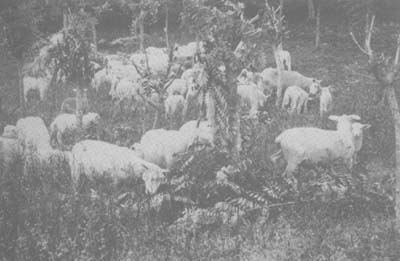
Figure 87. - Lopped Gliricidia providing a high protein supplement for ewes and lambs in Vanuatu.
It is now commonly found throughout the tropics because of its use as a shade tree in plantations of tea, coffee and cocoa (Skerman, 1977). It is often used as a living fence, branches being lopped off for fodder or as a green manure (Budowski, 1987). It was found to be a useful browse species in Fiji (Payne, 1955). Being deep rooted, it is drought resistant and produces large amounts of succulent high protein leafy material (see Figure 88) readily eaten by livestock once they become accustomed to the taste and smell (Atta-Krah and Sumberg, 1987). Although the unpleasant odour of fresh Gliricidia is commonly given as the reason for refusal by animals, wilting of the forage increases acceptability (Nitis, 1989; Palmer et al., 1990). As it can grow on very poor and acid soils (pH 4–5) and is moderately shade tolerant it can replace Leucaena leucocephala which prefers alkaline soils and does not grow well on acid soils (see Figure 89). Its tolerance of extremely acid soils (Liyanage, 1993) with high aluminium saturation has not been widely tested, however it clearly does not tolerate waterlogging. In West Java Gliricidia sepium (and Calliandra calothyrsus) outyielded L. leucocephala on acid soils (Panjaitan et al., 1986). In Sri Lanka, Liyanage et al. (1991) evaluated 13 provenances of Gliricidia sepium finding four that appeared to be much more shade tolerant than the local cultivar and which should be particularly useful as a component in a coconut based farming system. Cobbina and Atta-Krah (1992) evaluated 28 accessions over four seasons (24 months) in Nigeria, noting five which consistently produced 4–5 t ha-1 yr-1 of leaf dry matter. Bray et al. (1993) evaluated 28 accessions under cutting in north Queensland and 22 in North Sumatra, Indonesia noting that there were up to 3-fold differences in yield between accessions. Sukanten et al. (1993) reported on the growth and yield of 16 provenances in the dry season in Bali, Indonesia.
Halim (1991) compared the forage productivity of six species of tree/shrubs noting that Gliricidia initially at least had the highest leaf DM production (see Table 62).

Figure 88. - Gliricidia (G. sepium).
Feeding trials have been conducted in a number of countries such as Costa Rica (Rodriguez et al., 1987), Guatemala (Vargas et al., 1987), Indonesia (Cheeke and Raharjo, 1987), Mexico (Nochebuena and O'Donovan, 1986), Nigeria (Atta-Krah and Sumberg, 1987, 1988; Carew, 1983; Sumberg, 1985), Thailand (Vearasilp, 1981) and Zanzibar, Tanzania (Reynolds and Lund, 1983) and a number of detailed studies are available from Sri Lanka (Chadhokar, 1980b, 1981, 1982, 1983b, 1983c; Chadhokar and Kantharaju, 1980; Chadhokar and Lecamwasam, 1982; Liyanage et al., 1990; Liyanage, 1993). The feeding value of Gliricidia has been reviewed by Smith and Van Houtert (1987). Gliricidia is recommended for planting in hedgerows (such as in alley farming), as a living fence (Beer, 1987; Westley, 1990), scattered in pastures at wide spacing (e.g., 10 × 10 m) for shade and fodder (periodic lopping) or as small plots (protein banks or intensive feed gardens - IFG) on smallholder farms. It can also be planted as a double row (rows 1– 2 m apart) between each two rows of coconut trees with grazed pastures (e.g., P. maximum, B. brizantha, B. decumbens). Anoka et al., (1991) noted that gliricidia, especially in hedgerows, was effective in shading speargrass (Imperata cylindrica) and causing speargrass rhizome mortality. In Vanuatu, on Montmartre Plantation on Efate, gliricidia has been established at regular spacings in paddocks for use as a feed supplement for sheep in the dry season. Branches are lopped as required and the sheep readily consume and even relish the feed contrary to some reports that sheep will not eat gliricidia (see Figure 87).
Table 62. - Yield of 6 species of shrub and tree fodder (Halim, 1991)
| Species | Leaf DM kg ha-1 | Stem DM kg ha-1 | Total DM kg ha-1 | Leaf stem ratio |
| Gliricidia sepium | 9,981 | 8,669 | 18,660 | 1.15 |
| Leucaena leucocephala | 3,756 | 3,992 | 7,748 | 0.94 |
| Manihot esculenta | 9,267 | 12,008 | 21,275 | 0.77 |
| Moringia pterygosperma | 6,729 | 13,657 | 20,386 | 0.49 |
| Sesbania grandiflora | 2,029 | 2,658 | 4,687 | 0.76 |
| Flemingia congesta | 4,695 | 3,503 | 8,198 | 1.34 |
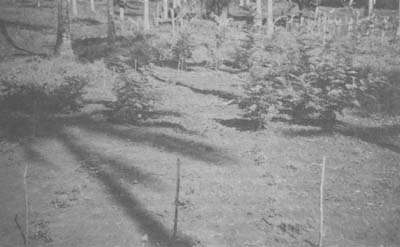
Figure 89. - Excellent growth of Gliricidia from seed (background) compared to Leucaena (foreground) on acid soils of pH 5.5 in Zanzibar (Tanzania).
Although Baars (1986) indicated that gliricidia needs full sunlight for good growth, reporting yield declines of 26–52 percent if gliricidia is grown in half shade as compared to full sunlight, good growth has been obtained under coconuts in various countries (see Figures 88 and 89) and Stur and Shelton (1991) note that it is persistent and highly productive under older coconuts. Liyanage and Wijeratne (1987) planted gliricidia in double rows (2.0 m × 0.9 m - 1,900 plants ha-1) between each two rows of coconuts and harvested more than 10 t ha-1 of green matter annually during first and second years, as well as 8–16 t ha-1 of firewood. Leaf litter was used as green manure for the coconut palms and as feed for cross-bred heifers. A mixture of 50:50 gliricidia leaves and B. subquadripara (B. miliiformis - Cori grass) produced average liveweight gains of 700 g day-1 (Liyanage and Jayasundera, 1988). With 20–30 percent crude protein and 50–75 percent digestibility gliricidia was demonstrated to be an excellent supplement. In another trial a mixture of gliricidia and leucaena was planted alternately 1.5 m apart along the fence in a pasture/cattle/coconut integrated system and produced more than 2 mt ha-1 yr-1 of fresh green matter. When fed to heifers at the rate of 6 kg along with pasture during the dry season this produced average liveweight gains of 300 g head-1 day-1. Satjipanon (1994) notes that gliricidia is less palatable than leucaena and should be gradually introduced to animals. The recommended quantity for cattle is 3–4 kg of dry leaves per day mixed with grasses. Although milk production in cattle fed with gliricidia is not affected, milk usually becomes tainted when gliricidia exceeds 50 percent of the total feed. In Bali, Indonesia Nitis et al. (1987) have used gliricidia as one component of the Three Strata Forage System (TSFS) to provide fodder during the dry season, and according to NFTA (1989) acceptable silage can be produced from gliricidia using standard silage making techniques. Has been used in alley farming as an alternative to Leucaena leucocephala (Sumberg, 1986).
Seeds can be sown directly in situ or nursery seedlings are planted out to avoid early weeding problems. ILCA has produced a small booklet describing the steps in gliricidia seed production (Sumberg, 1984). The most common method of establishment, however, is to use stakes or stem pieces (see Figure 90) which root and shoot readily in moist soils (in Jamaica the local name for Gliricidia sepium is “quick-stick” because of its ease of propagation - Glover, 1986). These may range from a few centimetres to over 2 m depending on the purpose of the trees. Glover (1986) demonstrated that rooting hormone and stripping 5 cm of the bark at the base of mature cuttings improved survival. Duguma (1988) showed that mature cuttings and oblique planting gave best results. The stake establishment method is simple, but is suitable mainly for situations where only a few trees are to be established, such as for fence posts, shade trees, etc. In Vanuatu, it has been reported that if long stakes are used gliricidia can be established in paddocks being grazed by sheep. Where short stakes are used the foliage may be eaten before the tree has a chance to establish (Charles Rogers, Montmartre Plantation). When intended for alley farming or intensive fodder gardens where tree populations of 10,000 to 50,000 may be required, stake establishment becomes costly, inconvenient and impractical. Inadequate or unavailable parent trees from which cuttings could be obtained may make the situation worse and seed propagation appears to be more convenient and reliable (Atta-Krah and Sumberg, 1987). While popular, stake establishment has the drawback that root development may be shallow and devoid of a strong tap root compared to seedling trees (NFTA, 1989). Shallow rooted trees are more susceptible to drought and wind damage.
In most countries where gliricidia is native or naturalized, it is well nodulated by native bacteria. In areas where it is not commonly grown it is necessary to inoculate with rhizobia culture to ensure nodulation. In S. Queensland where gliricidia was difficult to nodulate a number of rhizobium strains were evaluated (Akkasaeng et al., 1986). Rhizobia inoculum is available from NFTA and NifTAL in Hawaii.
In Sri Lanka, Liyanage et al. (1994) examined the biological nitrogen fixation potential of three Gliricidium sepium provenances and a local laudrace using the 15N isotope dilution method. N2 fixation ranged from the equivalent of 86 kg N ha-1 (at 5,000 trees ha-1) to 309 kg N ha-1, with an average of 166 kg N ha-1.
Falvey (1982) prepared a review of Gliricidia. Recent research on gliricidia, with an extensive bibliography and recommended research priorities, is presented in a special NFTA (1987) publication. A practical manual on gliricidia production and use (NFTA, 1989) has also been published for extension agents and development workers.
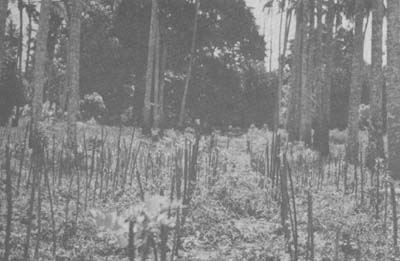
Figure 90. - Gliricidia established from stakes.
Leucaena leucocephala (Leucaena, Koa haole, Ipil-ipil)
Probably the most well known perennial browse shrub or tree legume, growing up to 20 m high with bipinnate leaves 15–20 cm long and distinctive white globose flowering heads (see Figure 91) and long flat pods with brown seeds (Bogdan, 1977). Because of its very deep root system Leucaena is particularly drought resistant preferring well drained soils (neutral to alkaline), in areas receiving more than 750 mm year-1 rainfall (Whiteman, 1980), although it grows in areas with up to 5,000 mm rainfall. Native to Central and South America it has now spread throughout the tropics and has become naturalized in most tropical countries (Skerman, 1977); usually growing wild along roadsides. Early introductions were used mainly as shade trees in plantation crops, but it has become an important fodder in a number of countries, particularly in Hawaii and Australia. It is propagated by seed or cuttings, but as cuttings do not take well, seed is the usual method of propagation (Steel et al., 1980). Duguma (1988) demonstrated that age of cuttings, oblique planting and planting depth were important to survival of cuttings, but that leucaena cuttings did not survive as well as gliricidia. Seeds need to be scarified and, in new areas, inoculated with the appropriate strain of rhizobium (Skerman, 1977). Seeds can be sown directly in situ or nursery seedlings are planted out to avoid weeding problems associated with the slow growth in the early stages. Cooksley (1982) looked at the effects of planting depth and sowing methods on the emergence of leucaena and concluded that 3–6 cm was the optimum sowing depth. Cooksley (1987) also noted that for leucaena to establish quickly it is necessary to control weed competition in the first weeks after planting. Although Pratchett and Triglone (1990) concluded that weeds and grasses do not affect establishment of leucaena where moisture is not limiting, generally weed competition in the early establishment period is a significant factor (Gutteridge, 1990; Maasdorp and Gutteridge, 1986). The ‘bare-stem’ method of establishing leucaena, which is a hybrid of the direct seeding and nursery methods, has been advocated (Anon., 1980a). Following a complete failure to establish leucaena from seed (due to damping off fungi at emergence or from insect attack from millipedes, army worms and earwigs) MacFarlane et al. (1993) successfully used bare-rooted leucaena seedlings and cuttings. Leucaena seedlings have also been raised on coconut fibre mats as well as in the more conventional plastic pots (Reynolds, 1979). Leucaena does not grow well on acid soils (Hutton and Andrew, 1978; Blair et al., 1988; Lesleighter and Shelton, 1986; Naidu et al., 1990, 1990b; Wong et al., 1989) and does not tolerate waterlogging, preferring well drained alluvial or coralline soils. As leucaena diversifolia has a high degree of acid soil tolerance it is being crossed with L. leucocephala to select acid-soil tolerant and agronomically acceptable leucaena (Hutton, 1990). Angel and Palm (1987) and Chen and Hutton (1993) reported on the screening of leguminous trees for acid soil.
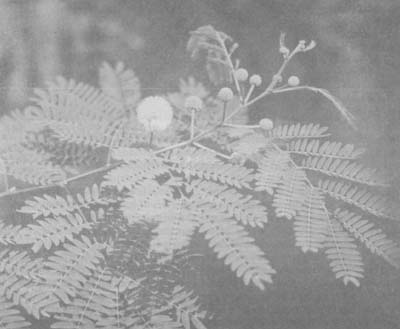
Figure 91. - Leucaena (L. leucocephala).
Although it cannot tolerate deep shade (Dijikman, 1950) it grows well in most coconut areas. Leucaena is ranked after Centro but ahead of Siratro and Stylo in terms of shade tolerance (Eriksen and Whitney, 1977). Panjaitan (1988) notes that according to Eriksen and Whitney (1982) dry matter yields of leucaena in full sunlight were 40% higher than those in 27% sunlight, and that relative growth rate declined by 20% with shading (Pound and Cairo, 1983). It can be used in a number of ways, for example, in Hawaii it is often grown in scattered untended stands on a range scale. Under coconuts it can be raised either in closely spaced rows as pure stands, interplanted with grasses using double rows of Leucaena (Liyanage et al., 1990) between each two rows of coconut trees (see Figure 92), or used as a living hedge (Torres, 1983) or in small plots on smallholder farms (Reynolds, 1979). Leucaena can produce good yields of high quality feed with a high protein content and is much relished by cattle, however, reported yields of pure stands vary from 2–20 t ha-1 year-1 of DM and up to 35 t when grown under irrigation. Leaf and wood yields have been shown to be closely related to tree density, cutting interval, cutting height and age at first cutting (Chen et al., 1992; Cooksley and Goward, 1988; Ella et al., 1989, 1991a; Girdhar and Pathak, 1990; Guevarra et al., 1978; Horne et al., 1986; Karim et al., 1991). A cutting height no lower than 50 cm was suggested, however, 1 m is a common height to which leucaena is grazed or slashed. Leucaena is also reported to have a very high nitrogen-fixing ability (Brewbaker et al., 1972; Skerman, 1977) although Sanginga et al. (1990) indicated differences in N2 fixation between isolines or provenances. When grown with aggressive stoloniferous grasses yields are lower but the browse layer of high protein feed complements the lower quality grasses (Ella et al., 1991; Izham et al., 1982), with which it may be difficult to maintain other legumes.
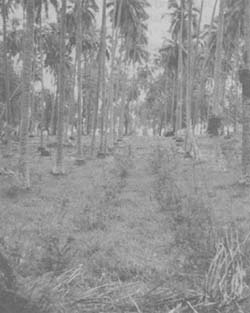
Figure 92. - Double row of Cunningham leucaena (L. leucocephala) and buffalo grass (Stenotraphrum secundatum) under coconuts, South Santo, Vanuatu.
When eaten as the sole feed, L. leucocephala can adversely affect animal health because of the high content of the alkaloid mimosine which can cause metabolic disorders, loss of hair, enlarged thyroids and may result in disruption of the reproductive cycle in cattle (Bogdan, 1977; Holmes, 1981; Jones and Hegarty, 1984; Jones et al., 1989; Whiteman, 1980). Changes in mimosine content of L. leucocephala leaf during growth and development were studied by Tangendjja et al. (1986). The problem of mimosine toxicity has been dealt with in a number of papers (Hegarty, 1982; Hegarty et al., 1979; Jones, 1985; Jones and Hegarty, 1984; Jones and Lowry, 1984; Jones et al., 1976). No such disorders were reported from Hawaii and work by Jones (1981a, 1981b) demonstrated that ruminal metabolism of mimosine and its derivative DHP (3-hydroxy-4(IH)-pyridone) differed in Hawaii from Australia, where the problem could be severe. This led to the suggestion that differences were due to specific rumen microbes being present in Hawaii but absent in Australia (Anon., 1982c) and the work of Jones and Megarrity (1986), Jones and Lowry (1984), Pratchett et al. (1991) and Quirk et al. (1988) demonstrated that specific DHP degrading bacteria were present in Hawaii and not in Australia and that they could be transferred by oral dosing with the DHP degrading bacteria. The mimosine problem led to a breeding programme being initiated with cultivars including: cv. Peru, cv. El Salvador, cv. Hawaii and cv. Guatemala to produce low mimosine cultivars even lower than cv. Cunningham (Bray et al., 1984; Skerman, 1977). Many new accessions have been tested in various countries (Bray et al., 1988; Wong et al., 1982).
Leucaena is best rotationally grazed to allow recovery when all leaves have been removed. Prior to the discovery that DHP degrading bacteria could be transferred by oral dosing (and in areas where mimosine is still a problem and adoption of the dosing technique is not possible) it was suggested that intake of leucaena should be limited to 25 or 30 percent of diet to avoid mimosine induced problems (Jones, 1979, Jones and Hegarty, 1984). High liveweight gains of 600–700 kg ha-1 year-1 have been reported on Leucaena-Guinea grass pastures in Australia and Hawaii. According to Jones and Bray (1983) mixtures of leucaena and various grasses rotationally grazed in trials have produced liveweight gains in cattle ranging from 311 to 830 kg ha-1 year-1. Shelton (1989) mentions smallholders in eastern Efate, Vanuatu fencing small areas of leucaena thicket and daily cutting saplings for feeding to their animals. Some of the best smallholder cattle in Vanuatu are produced under this system (MacFarlane and Shelton, 1986). However, Shelton (1989) also mentions that people are concerned about its weed potential, a factor raised in Western Samoa and also mentioned by Liyanage and Jayasundera (1988) in Sri Lanka where the profuse seeding habit of some varieties has led to rapid spread. Leucaena use is particularly widespread in village cattle raising enterprises in Indonesia (Oka and Bahagiawati, 1988) and Philippines (Moog, 1992; 1992a) and is already used in many coconut growing areas especially by smallholders. Useful references include: AGPC (1991), Anon. (1977a), Atta-Krah and Reynolds (1989), Bray (1986), Blunt and Jones (1977), Foster and Blight (1983, 1987), Gray (1968), Hill (1971), Jones et al. (1976), Jones and Jones (1982, 1984), Krisnawati Suryanata et al. (1988), National Research Council (1984), Lesleighter and Shelton (1986), Moog (1991), Muinga et al. (1992), Nitis (1989), Oakes (1968); Partridge and Ranacou (1973, 1974), Parilla et al. (1988), Peungchai et al. (1989), RAPA (1987), Speedy and Pugliese (1992), Van Eys et al. (1986), Wildin (1986) and Yates and Panggabean (1988).
Although the mimosine-toxicity problems associated with leucaena feeding have largely been solved for ruminants (Bassala et al., 1991; Bray et al, 1984; Shelton, 1989), mimosine still limits the utility of leucaena for non-ruminants such as pigs and chickens and a new problem, the psyllid insect (Heteropsylla cubana) “threatens to substantially reduce the productivity of this valuable legume fodder” (Shelton, 1989).
The spread of the leucaena psyllid or ‘jumping plant lice’ Heteropsylla cubana Crawford has been described by Mitchell and Waterhouse (1986) and from first reports of damage to leucaena in Hawaii and Florida in the early 1980s it is now a problem in most leucaena areas (Anon., 1992; Chazeau, 1987; Crump, 1991; Mitchell and Waterhouse, 1986; Napompeth and MacDicken, 1989; NFTA, 1986; Van den Beldt and Napompeth, 1992). The insects pierce plant tissue with their mouth parts and suck plant sap. As they prefer young tender growing tips, these turn yellow, wilt and die (see Figure 93). The damage can be devastating with reports of reductions in edible material by 50% and even higher and stem yield by 50–80% (Bray and Woodroffe, 1991; Palmer et al, 1989; Moog, 1992). The impact has been particularly devastating on some smallholder cattle feeding systems (Moog, 1992; Oka and Bahagiawati, 1988; Piggin and Parera, 1987). Few drawbacks were originally seen to the widespread use of leucaena. With the arrival of the psyllid, programmes are underway to find resistant varieties or replacement species as well as introducing integrated control measures (Blair, 1991; Wheeler and Brewbaker, 1989). Many farmers have replanted with Gliricidia and other species (Gunasena et al., 1989) whereas in other areas the damage has not been so severe and in spite of recurrent psyllid reinfestation leucaena continues to be used and the psyllid is a seasonal problem only. Useful references on the psyllid include: Bray and Woodroffe (1988, 1991), Mitchell and Waterhouse (1986), Moog (1992), Napompeth and MacDicken (1989), NFTA (1986), Palmer et al. (1989), Sorensson and Brewbaker (1986), Van Den Belt and Napompeth (1992) and Wheeler (1988). Useful references on the introduction and evaluation of new species include: Ash et al. (1992), Atta-Krah (1989), Baggio and Heuveldop (1984), Brewbaker (1986a), Catchpoole and Blair (1990a, 1990b), Cobbina et al. (1990) Devendra (1990a, 1990b, 1992), Felker et al. (1991), Gutteridge (1990), MacDicken (1988), MacFarlane et al. (1994), Moog (1992a), Mureithi et al. (1994), Nair et al. (1984), Nitis (1989), Panjaitan (1988), Speedy and Pugliese (1992), Smith (1992), Sorensson et al. (1994) and Wheeler and Brewbaker (1989).
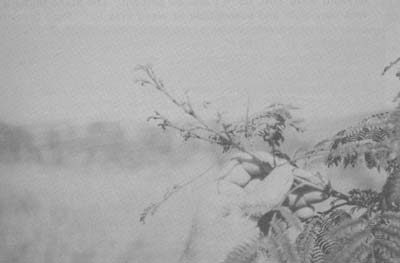
Figure 93. - Leucaena growing tips damaged by the leucaena psyllid (Heteropsylla cubana).
Following an international workshop in Bogor, Indonesia 24–29 January 1994 an international network for leucaena research and development (LEUCNET) has been formed (Anon., 1994). The network will facilitate coordination and communication of leucaena improvement among scientists, extension workers and farmers. Following the devastation caused by the psyllid one of the objectives of the Leucaena Network (LEUCNET) is to foster cooperative research projects that exploit the lesser-known species and hybrids of leucaena (many of which have characteristics which are potentially very useful in agriculture). The first newsletter was produced in March 1995 (Anon., 1995a).
Macroptilium atropurpureum (Siratro)
A perennial species with trailing or creeping stolons rooting at the nodes. Siratro is a climber and mixes well with a number of grasses (see Figure 94). It has dark green trifoliate leaves with lobed leaflets, dark purple flowers on an elongated stem and cylindrical pods about 8 cm long which burst open when ripe and spread seeds on the ground (Bogdan, 1977 Skerman, 1977; Steel et al., 1980; Whiteman, 1980). Deep rooted it has a good drought tolerance, grows best in areas receiving more than 750 mm rainfall, but is not adapted to the wet tropics (>1750 mm rainfall) where productivity and survival is greatly affected by Rhizoctonia leaf rot (Tarawali, 1991; Whiteman, 1980). However, in Vanuatu, Evans et al. (1992) indicate that while monospecific demonstration plots have been affected, Rhizoctonia damage seems much less in mixed grazed swards. Diseases of Siratro were reviewed by Lenne and Sonoda (1985). It thrives on a wide range of soils except those poorly drained (Davies and Hutton, 1970), doing particularly well on coralline soils (Gutteridge and Whiteman, 1978). Siratro is seed propagated, is not specific in its Rhizobium requirements thus inoculation is not necessary, but scarification may be needed for hard seededness (Steel et al., 1980). Although germinating and establishing vigorously in a well prepared seedbed and forming good mixtures with a range of grasses (including B. humidicola, P. maximum, Green panic and P. commersonii), it is susceptible to heavy grazing and does not persist if frequent severe defoliation occurs (Jones and Bunch, 1988; Whiteman, 1969). It grows reasonably well in moderate shade, but yields poorly under heavy shade (Eriksen and Whitney, 1982). Relative yields at 100, 75, 45 and 27 percent daylight were 100, 69, 41 and 20 percent. The stand under 27 percent daylight was very poor and susceptible to weed invasion. Poor growth of Siratro at low solar radiation levels was also reported by Ranacou (1972), Whiteman et al. (1974) and Ludlow et al. (1974). Siratro fixes N around 50–175 kg ha-1 year-1 (Reynolds, 1982c: Skerman, 1977); cattle liveweight gains when Siratro is associated with C. ciliaris, S. anceps and P. maximum under open conditions have been reported as: 173, 256 and 432 kg ha-1 year-1 at various stocking rates (Jones, 1974c: Stobbs, 1976 and 't Mannetje, 1972). In Zanzibar, when grown under coconuts, it quickly died back (see Figure 95) after being affected by Rhizoctonia solani leaf rot (Reynolds, 1983). Ng and Wong (1976) reported similar problems in Sarawak. In moderate shade under coconuts in Vanuatu, Siratro was useful in smothering Cassia tora. It showed unsatisfactory growth in Sri Lanka (Chadhokar, 1983b), performed well only on lightly shaded coralline soils in the Solomon Islands (Gutteridge and Whiteman, 1978) and was much inferior to Centro (under coconuts) in Western Samoa. Thus its inability to tolerate heavy shade and grazing and its susceptibility to disease under wet conditions limit its use to dry areas and coral soils under old widely spaced coconut stands.
Mimosa pudica (Mimosa, small mimosa, sensitive plant, hila-hila)
A creeping, spreading plant with thorny stems, many lobed and sensitive leaves which fold when touched, pink ball-like flowers (see Figure 96), seeds in small bristle-covered pods, often forming small compact bushes about 0.6 m tall (Skerman, 1977). Found throughout the tropics and common in most native pastures. It is often regarded as a weed like the giant mimosa (M. invisa), however, experience in Hawaii (Ripperton and Hosaka, 1924), Fiji (Partridge, 1979), the Solomon Islands (Steel et al., 1980) and Western Samoa (Reynolds, 1981) has shown it can produce good cattle growth rates. Therefore it should be considered as a useful volunteer pasture legume, well adapted to shade, growing well on a range of soils and under coconuts and seeding profusely. Once cattle adapt to it, is eaten readily and kept grazed back to young tender shoots (Steel et al., 1980). Tolerates very heavy grazing, grows well with low growing stoloniferous grasses, but needs to be kept under control to prevent developing into bushes with older, woody, thorny material. Kaligis (1991) noted that it was very palatable to goats in North Sulawesi (where it is common with C. pubescens and C. mucunoides in native pastures) although dry matter yields were low, about 600 kg DM ha-1, and leaf percentage was only 52%. In Western Samoa and the Solomon Islands local pastures with a high content of high protein mimosa have been used for fattening cattle for more than 60 years (Plucknett, 1979) and have produced cattle liveweight gains from 80 up to 400 kg ha-1 year-1 under trial conditions with stocking rates up to 3.5 animals ha-1 (Reynolds, 1981; Robinson, 1981; Smith and Whiteman, 1983b; Watson and Whiteman, 1981a). When grown in mixtures with Cori grass and tall Guinea (see Figure 97), Mimosa fixed 83 and 43 kg ha-1 year-1 of N, 45 and 28 percent respectively of which was transferred from the legume to its associated grass (see Table 58), this was a much higher percentage than for exotic legumes in the same trial (Reynolds, 1982c). Although Mimosa is not recommended for planting, it should be accepted as a useful component of indigenous pastures under coconut and in improved pastures if it becomes established and provided grazing management keeps it under control. It is important that pastures containing M. pudica be grazed continuously rather than rotationally (Steel et al., 1980) and M. pudica should be slashed down if it clumps.
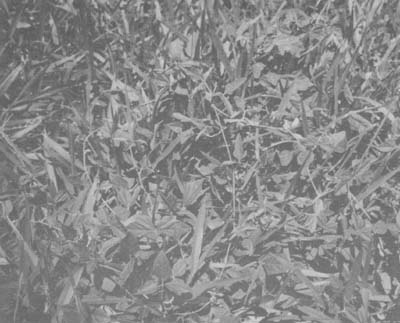
Figure 94. - Siratro (M. atropurpureum) with Palisade grass (B. brizantha).

Figure 95. - Siratro dieback resulting from Rhizoctonia leaf rot.
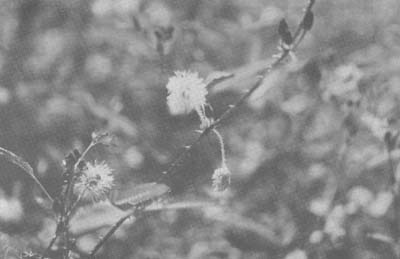
Figure 96. - Mimosa or sensitive plant (M. pudica).

Figure 97. - Mimosa pudica growing well with Guinea grass (P. maximum).
Neonotonia wightii (Glycine)
A climbing, trailing or procumbent perennial herb with a strong taproot. Stems are slender and well branched, leaflets ovate to elliptical (see Figure 98) are glabrous or hairy on both sides, elongated racemes 4 to 30 cm long with clusters of white or violet flowers. It grows mainly in the tropics and sub-tropics of Eastern Africa, India and Asia (Bogdan, 1977, Skerman, 1977). Glycine is reasonably drought resistant and is best adapted to areas with annual rainfall between 750–1500 mm. It produces good yields on deep, fertile, well drained soils with a pH of about 6.5; combines well with a number of grasses such as P. maximum, S. anceps, C. gayana, D. decumbens (see Figure 55) and P. purpureum. Seed of several cultivars: cv. Clarence, Cooper, Malawi and Tinaroo, is commercially available. Establishment is by seed only in well prepared seed beds with seed requiring inoculation before sowing. Initial establishment is slow (Whiteman, 1980) but once established is reasonably persistent producing good liveweight gains. It is fairly shade tolerant, is ranked third after D. intortum and C. pubescens by Ludlow (1980) although Whiteman et al., (1974) gave the relative yields at 50 percent daylight of D. intortum, N. wightii, C. pubescens and M. atropurpureum as 73, 55, 34 and 23 percent respectively. Eriksen and Whitney (1982) showed productivity declining rapidly below 45 percent light and Bazill (1987) noted that it grew better in less shaded conditions. In Zanzibar, under wet tropical conditions, Reynolds (1983) noted that cvs Clarence and Cooper (see Figure 98) were affected, to some degree, by the Rhizoctonia leaf rot which devastated Siratro. In Vanuatu, according to MacFarlane and Shelton (1986), glycine has been the major sown legume, combining well with Signal, guinea and green panic, but often declining markedly after 5–10 years of grazing, particularly in dry years. It does not tolerate overgrazing and therefore is not recommended for smallholders (in Vanuatu) except for initial smothering of weeds. Evans et al. (1993) noted that glycine was extremely useful for preventing regrowth of weed species under 60 year old coconuts on Malekula, successfully smothering the weeds (see Figure 127). Signal grass-legume pastures (including glycine) were maintained at a grazed height of 15– 20 cm and stocking rates were reduced from 2.5 AU ha-1 to 1.8 AU ha-1 in the dry season. Tinaroo and Malawi do well in warmer, wetter environments but above about 1,800 mm mean annual rainfall may be affected by leaf diseases. Evans (1995) reported that Malawi glycine was performing well in Western Samoa both under coconuts and in open sites. While N. wightii may have a role in drier coconut areas (such as in Vanuatu), it does not seem particularly suited to the majority of coconut areas where grazing is likely to take place. Possibly the Vanuatu experience should be reviewed to determine wider applicability of the findings.

Figure 98. - Glycine (Neonotonia wightii cv. Cooper).
Pueraria phaseoloides (Puero, Tropical Kudzu)
An extremely vigorous climbing legume with large hairy tri-foliate leaves, hairy stems and long runners which may extend from 5 to 6 m. Sometimes rooting at the nodes, thus forming a number of lateral or secondary branches. These intertwine resulting in a tangled mass of vegetation 60–75 cm deep within 8 to 9 months from sowing. Purple flowers are produced on a long raceme, held above the plant (see Figure 99). Pods are about 10 cm long, hairy and black when mature (Skerman, 1977; Steel et al., 1980). Puero originates from South-East Asia, Malaysia and Indonesia, but is now widespread throughout the wet tropics and naturalized in most tropical countries. It was first grown as a cover crop in tree plantations or as a green manure and later as a fodder plant (Bogdan, 1977).

Figure 99. - Puero (Pueraria phaseoloides).
Although it can grow on a wide range of soils (except very heavy clays and coralline areas, Steel et al., 1980) it prefers areas with rainfall > 2,500 mm, withstanding short dry periods as well as acid and waterlogged conditions (Skerman, 1977). It does not persist well where there is a regular dry season. Propagated by seed or stem cuttings it nodulates with the cowpea type of rhizobium. Scarification of seed is recommended (Aya, 1973). Although germination and early growth are slow, once established it grows very rapidly and can form a complete cover in 3–4 months; thus its use as a cover crop to smother weeds. It is palatable and is superior to C. mucunoides, however Steel et al., (1980) suggest that palatability may be affected by season and shade. At South Johnstone (north Queensland) the palatability rating of Puero was > V. hosei > Stylo > Centro > Hetero > Calopo (Skerman, 1977). Evans and al. (1992) suggest that Puero is less palatable than centro and glycine. Grows well with B. miliiformis, M. minutiflora, P. maximum and P. purpureum, but cannot persist with B. decumbens. Already widely used as a cover crop under coconuts and is often used as a pioneering legume sown with Calopo, Centro and a grass. In this instance Calopo will dominate the cover in the first year, followed by Puero and lastly Centro will persist (Wilson and Lansbury, 1958). It is fairly shade tolerant, grows well under coconuts, however “under high rainfall conditions, and particularly under shade, it appears to be poorly accepted by cattle and can smother the sown grasses” (Steel et al., 1980). Careful grazing management is thus required to maintain a desirable grass-legume balance. In Vanuatu MacFarlane et al. (1993) noted that “there would appear to be some palatability problems with puero, particular during the wet season, with more acceptability towards the end of the dry season. In fact, extra stocking pressure may be required during the wet to prevent the puero from smothering out the para grass”. Puero does not persist under heavy grazing (Plucknett, 1979); it was reported by Smith and Whiteman (1983b) that although at a stocking rate of 1.5 animals ha-1 under coconuts Puero and Calopo dominated the pasture, at higher stocking rates of 2.5 and 3.5 animals ha-1 Centro and Mimosa dominated. On sown pastures, the grasses B. decumbens and B. miliiformis were selectively grazed allowing pastures to become Puero dominant. Puero was found to be a better contributor of nitrogen to the soil than Calopo, Centro and Stylo (Schofield, 1945), while its superiority over Calopo was noted by Oke (1967). In Western Samoa, 136 and 182 kg ha-1 year-1 N were fixed by a Puero-Calopo mixture when grown with tall Guinea and B. miliiformis respectively (Reynolds, 1982c). Good liveweight gains have been reported with Puero-grass mixtures in Australia and Puerto Rico (Skerman, 1977) and Evans et al. (1992) indicate that in Vanuatu Puero has maintained a stable association with guinea grass for 15 years while rotationally grazed at an average stocking rate of 2–2.5 AU ha-1. Already widely used as a cover crop under coconuts and showing good shade tolerance, Puero is recommended as a pioneer legume to be used possibly with Calopo and Centro and one of the shade tolerant grasses. However, very careful grazing management is recommended. As it may become dominant under very shady conditions, it is probably best used in areas with old widely spaced coconut stands.
Stylosanthes guianensis (Stylo)
An erect herbaceous perennial species with branching upright stems up to 1 m tall which may become prostrate under grazing. The stems are hairy, becoming woody at the base with age; leaves are small and trifoliate with pointed leaflets, yellow flowers, seeds yellowish-brown and the main taproot extending to 1 m (Skerman, 1977). Widespread naturally in Central and South America, Stylo has been introduced to other areas and is now grown throughout the tropics (Bogdan, 1977). Because of its considerable variability Stylo adapts to various climatic conditions. It can grow under rainfall conditions varying from 500–4,000 mm (Davies and Hutton, 1970), has good drought tolerance and can tolerate temporary water logging (Rijkebusch, 1967), grows on highly acid but not coralline soils (Steel et al., 1980). Stylo is propagated by seed but can be established vegetatively from stem cuttings (Miles, 1983; Schofield, 1941). Seed requires scarification but inoculation is not usually required, except possibly on newly cleared land. Although best established on a well prepared seedbed, it can be oversown without land preparation or with only minimal cultivation. It has been grown successfully with a number of grasses including D. decumbens C. gayana, M. minutiflora, S. anceps and P. maximum (Whiteman, 1980). Although relatively unpalatable in the early stages of growth, it is readily eaten by cattle once they become accustomed to it; good liveweight gains have been reported (Skerman, 1977) although good management is required because it does not tolerate heavy grazing (Steel et al., 1980). The seed of 4 main cultivars is commercially available from Australia (cvs Cook - see Figure 100, Endeavour, Oxley and Schofield). In some areas Stylo is severely affected by anthracnose, fungal disease caused by the pathogen Colletotrichum gloesporioides (Penz.) Sacc (Otero, 1952; Steel et al., 1980; Tarawali, 1991), by termites (Akinola, 1981; Reynolds, 1983) and also by Rhizoctonia solani (foliar blight) in wet conditions (Blouard and Thuriaux, 1962).
In parts of West Africa only S. hamata cv. Verano has remained resistant to anthracnose and a fodder legume evaluation programme is being conducted to identify other promising legumes (Tarawali, 1991; Tarawali et al., 1989). Although Gregor (1972) identified Stylo as a useful shade tolerant species after screening trials under 46% artificial shade, other workers indicated that yields of Stylo (cv. Schofield) were severely depressed by shading (Ranacou, 1972; Eriksen and Whitney, 1977, 1982). Relative yields at 100, 70, 45 and 27 percent daylight were 100, 50, 27 and 12 percent (Eriksen and Whitney, 1982). Stylo was rated the least shade tolerant of seven legumes by Ludlow (1980). Skerman (1977) reports that Schofield Stylo is only moderately tolerant of shading and grows under coconuts in Tanzania with a more erect habit. Under closely planted oil palms yield is reduced more than 75 percent (Anon., 1965). Steel and Humphreys (1974) reported satisfactory growth of Endeavour Stylo at Kuta, Bali in Indonesia where noon light transmission was 77 to 80 percent in 30 to 50 year old palms spaced 10 to 12 m apart. Also in Sri Lanka, Stylosanthes varieties are recommended among forage species for the coconut triangle, where old palms at wide spacings would predominate (Chadhokar, 1980b, 1983b). In Zanzibar, Tanzania, Schofield Stylo (see Figure 101) also performed well initially under tall, wide spaced coconuts (light transmission 80–90%; Reynolds, 1983), but as in the Solomon Islands it behaved more as a short term pioneer species giving high yields in the first year and declining somewhat thereafter (Gutteridge and Whiteman, 1978). Teitzel (1992) noted that Stylosanthes guianensis is not particularly palatable in its early stages, is sensitive to shading, and can benefit from early grazing. Clearly Stylo should not be planted under young or closely spaced coconuts because of poor shade tolerance. There are probably better legumes for most situations except perhaps for infertile soils carrying older, widely spaced palms (Plucknett, 1979).

Figure 100. - Cook Stylo (Stylosanthes guianensis cv. Cook) (Photo D. MacFarlane).
Other Stylosanthes species which may play a role in pastures under coconuts include:
Stylosanthes fruticosa - a much branched perennial herb very similar to S. guianensis found in tropical Africa, Madagascar, India and Sri Lanka. Has grown well under widely spaced coconuts in Zanzibar (Reynolds, 1983).
Stylosanthes hamata - see Figure 102 (Caribbean stylo cv. Verano) and Stylosanthes scabra (Shrubby stylo cv. Seca) see Figure 103 - are both rated as promising species under coconuts in Sri Lanka (Chadhokar, 1983b), but according to Evans et al. (1992) both have poor shade tolerance. However, in Malaysia Ahmad et al. (1981) demonstrated that Verano stylo established under coconuts on Bris soils better than Schofield stylo and Desmodium ovalifolium and Ng (1991) identified S. scabra cv. Seca and S. guianensis CIAT 184 as species showing good regrowth and persistence under the declining light environments of maturing rubber. Thongmee (1992) reported on the use of Verano in Forest plantations in N. Thailand.
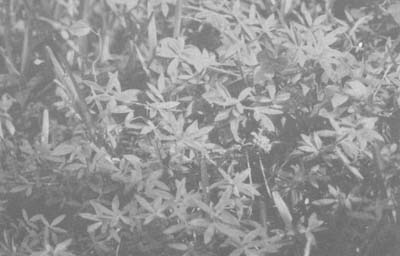
Figure 101. - Schofield Stylo (S. guianensis cv. Schofield) with Pemba grass (Stenotaphrum dimidiatum) in Zanzibar, Tanzania.
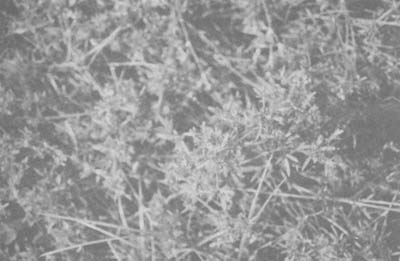
Figure 102. - Caribbean or Verano stylo (S. hamata cv. Verano).
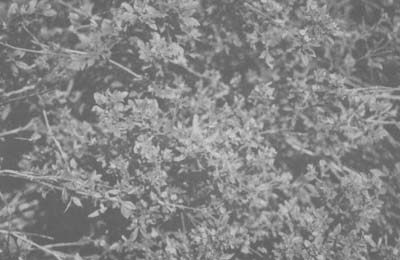
Figure 103. — Shrubby or Seca stylo (S. scabra cv. Seca).
Stur (1991) noted that Stylosanthes humilis (Townsville stylo), Stylosanthes guianensis cv. Endeavour and Stylosanthes hamata cv. Amiga performed well under 50% light transmission but were not in the top ranked species at shadier conditions of only 20% light transmission.
Teramnus labialis
A perennial twining or trailing herb (see Figure 104) with reddish flowers and flat pods 3.5 to 7.5 cm long, often hooked at the apex. Found in tropical Africa, Sudan, South—East Asia and the West Indies, thriving on wet soils, requiring moderate or good rainfall of 1,000 mm or more. It can form a dense growth, mixes well with grasses and is well accepted by cattle (Bogdan, 1977; Skerman, 1977). Excellent mixed swards of T. labialis and S. dimidiatum (see Figure 72) were noted in Zanzibar under coconuts (Reynolds, 1983). In the British Virgin Islands it was reported to grow profusely in many pastures, persisting well and producing considerable bulk without smothering the grasses (Skerman, 1977). Stur (1991) noted it as one of the legumes which performed well under heavier shade (20% light transmission). Although seed is not readily available this is a legume which warrants further investigation in other coconut growing areas.
Vigna hosei (Creeping vigna)
A perennial, twining, creeping stoloniferous legume with long thin stems and few distinctive large yellow flowers. It also sets subterranean flower buds (Evans and MacFarlane, 1990) which is very rare. Its leaves are ovate—elliptic with long thin hairs on both surfaces (Skerman, 1977). It is widespread in the tropics and is native to Sabah and Sarawak. Adapted to acid soils (pH 4.5 or less) in areas with 2,500 mm or more of rainfall, it is tolerant of flooding but not drought. It spreads very rapidly under natural conditions, but for establishment a good seed bed is recommended with a seeding rate of 1 kg ha-1. Seed production is poor and seeds may require acid treatment for 10 minutes to break dormancy. As seeds are not easily obtained, Evans et al. (1992) recommend vegetative propagation in wet soils with overcast conditions, as for hetero.
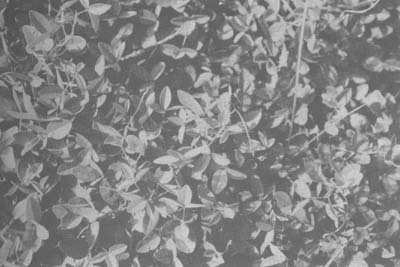
Figure 104. - Teramnus labialis (Photo D. MacFarlane).
Bunting (1930) found that it gave good growth under coconuts as a green manure. Evans et al. (1992) describe it as moderately shade tolerant. Once established it will tolerate heavy grazing and is slightly more palatable than centro, but less palatable than Puero (Evans and MacFarlane, 1990). In Vanuatu when growing in pure stands it has completely smothered Solanum torvum infested pastures and probably fixes and transfers substantial amounts of nitrogen when well nodulated. It combines well with buffalo, Koronivia and Signal grasses and should be incorporated into grass nurseries to provide material for transplanting.
Evans et al. (1992) suggest that it has been a very much underrated native legume in the past and notes that in Signal grass pastures stocked at 2 AU ha-1 for three years creeping vigna (Vigna hosei) has spread steadily throughout the pasture. Its role under coconuts needs to be further evaluated but it appears to be similar to hetero, although probably requiring more fertile soils. In Vanuatu, on Santo, good liveweight gains of 0.5 kg head-1 day-1 have been achieved on buffalo grass - Vigna hosei pastures.
Vigna luteola (Dalrymple vigna cv. Dalrymple)
A dense leafy perennial with long twining stems and distinctive yellow flowers (see Figure 105), widely distributed in tropical Asia, Africa and South America, occurring especially in swampy or wet soils (Bogdan, 1977). Prefers a rainfall of > 1250 mm and does not tolerate drought or dry conditions. Although good growth has been reported with Paspalum and Setaria species (Skerman, 1977), it is not very tolerant of either heavy grazing or cutting and suffers from insect damage (Mellor et al., 1973b; Whiteman, 1980). Although initially made good growth in Western Samoa, and fixed 31 and 126 kg ha-1 year-1 N, in a cutting trial with tall Guinea and B. miliiformis respectively, it soon declined and died back in the dry season. It is very palatable, very fast growing and thus may have a role as a pioneer legume, but little is known about its shade tolerance although it yielded well under both 50% and 20% light transmission in trials reported by Stur (1991). At this stage it is not recommended for coconut areas.
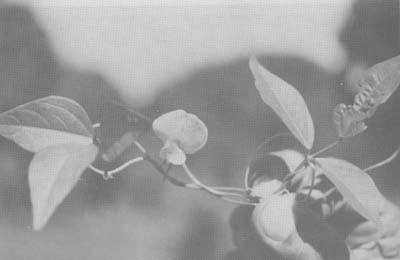
Figure 105. - Vigna luteola.
Vigna parkeri cv. Shaw (Shaw Creeping Vigna)
Described by Bogdan (1977) as a perennial climbing or procumbent herb with slender stems often rooting at the nodes. According to Evans and MacFarlane (1990) a perennial legume which adapts its growth habit to grazing pressure. Thus under heavy grazing it forms a low dense mat with strong root development along prostrate stems. Under lenient grazing lateral shoots from these stems grow upwards and twine up taller plants. Originating in tropical East Africa it has blue to bluish—violet flowers and distinctive pale crescent markings on the leaves. Suited to areas receiving more than 1,100 mm of rainfall it will tolerate low soil fertility and low soil pH, but does not like prolonged dry conditions (MacFarlane et al., 1992). It is more tolerant of low fertility than creeping vigna (Vigna hosei). It establishes readily from seed (2 kg ha-1 in pasture mixtures) which is very expensive, but hand planting of cuttings in overcast weather is successful. Combines well with buffalo and Signal grass and Kazungula setaria especially on coastal soils. Evans et al. (1992) suggest that Shaw creeping vigna prefers a grazed pasture height of no more than 15 cm when grown with the creeping grasses. It is very shade tolerant and well suited to the coconut environment.